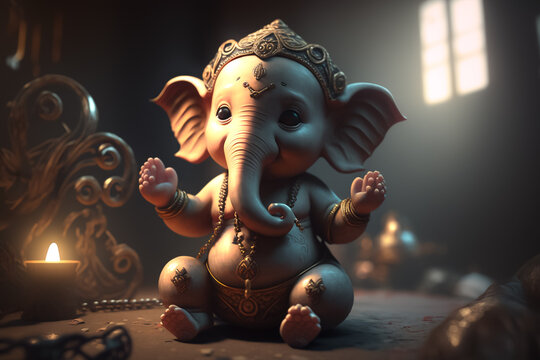Lord Vinayagar, also known as Ganesha, holds a special place in the vast tapestry of Hindu mythology. He is revered as the son of Lord Shiva and the embodiment of wisdom and auspiciousness. One of the most intriguing aspects of Vinayagar’s symbolism is his association with an elephant. But what does this symbolism truly represent, and how can it guide us in our spiritual journey? Let’s explore the profound philosophy hidden behind Lord Vinayagar’s image.
The Divine Essence Within
Lord Vinayagar, the elephant-headed deity, is the first to be worshipped before seeking the blessings of other gods and goddesses. His unique form is a powerful reminder that the divine presence resides within all living beings. To understand this concept, we must delve into the essence of life itself—the soul.
The Soul: The Divine Spark
The life force that animates our bodies is none other than the soul, and this soul is, in essence, divine. It is the eternal spark of God present within every living creature. This philosophy tells us that God is not some distant, separate entity; rather, God is within us, a part of our very being. This divine essence is often depicted in a light form, emphasizing the purity and brilliance of the divine presence.
The Elephant Metaphor
Now, let’s address a common question: if Lord Ganesha resides within all living beings, how can we reconcile this with the instances of elephants causing harm? The answer lies in understanding that God’s presence is not limited to “good” or “bad” elephants; it is universal. Just as humans can act in both benevolent and harmful ways, so too can animals, including elephants. God’s presence is a constant, regardless of the actions of the physical body it inhabits.
Unlocking God’s Power Within
The iconography of Lord Vinayagar with his elephant head carries a deeper message. It signifies the potential for harnessing the divine energy within us. Through meditation and yoga, we can transform our external breath into an internal force, akin to the powerful trunk of Lord Ganesha. As we continue this practice, our breath becomes more concentrated within, symbolized by the reduction of Ganesha’s trunk.
Expanding Awareness and Spiritual Growth
A deeper connection with the divine through breath control leads to profound changes within ourselves. Just as Lord Vinayagar is depicted with a large belly, spiritual gurus may have enlarged stomachs due to their mastery of internal energy. Some may follow the path of inner light and appear lean, signifying their inclination and dedication to the element – light.
Magnetic Eyes and Enhanced Senses
Enhanced awareness and spiritual growth also manifest in our physical appearance. Just as Ganesha has large ears to hear all, those on a spiritual path may develop magnetic eyes and an expanded capacity to perceive and understand the world around them. This heightened sensing capacity is a testament to the divine potential within each of us.
Vinayagar Chathurthi: A Celebration of the Divine Within
Vinayagar Chathurthi, often associated with the worship of an elephant-headed deity, is not merely a day of celebration but a reminder of our innate divinity. It serves as a call to action to unlock the godly essence within ourselves. The key to this realization lies in converting our external breath into internal breath, cultivating compassion, and extending love toward all living beings.
Conclusion
The philosophy of Lord Vinayagar teaches us that divinity is not an external force but an intrinsic part of our being. By focusing on our breath, practicing meditation, and fostering compassion, we can unlock the immense potential within us. In doing so, we align ourselves with the profound wisdom of Lord Ganesha, symbolizing the unity of the divine within all living beings.

